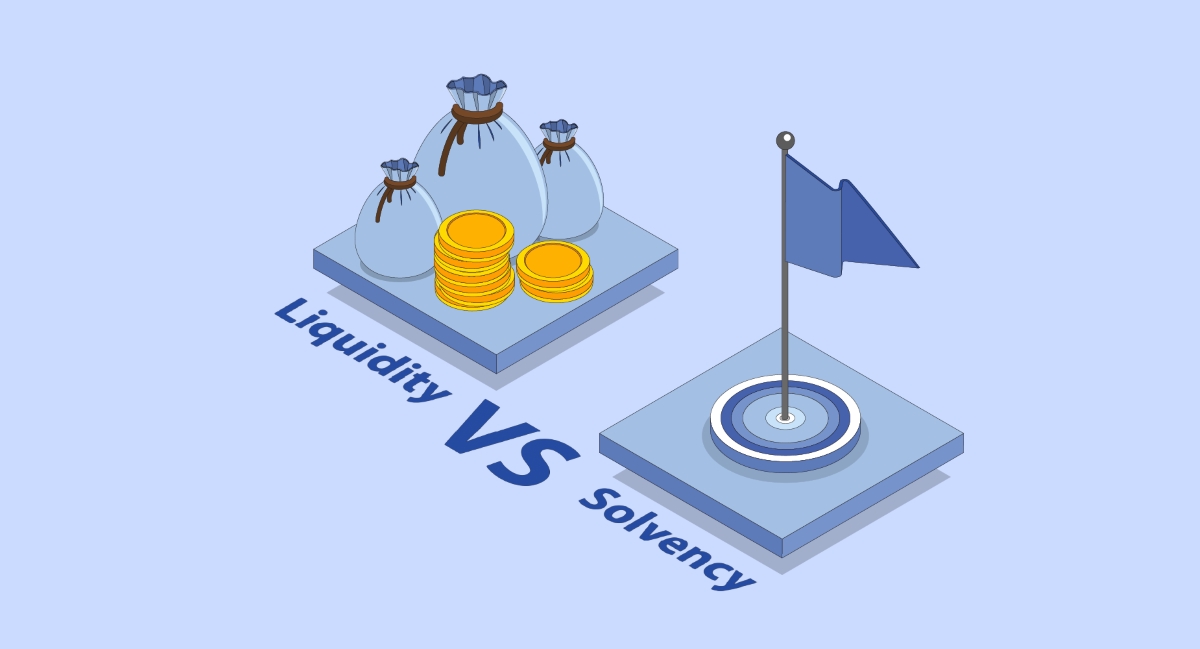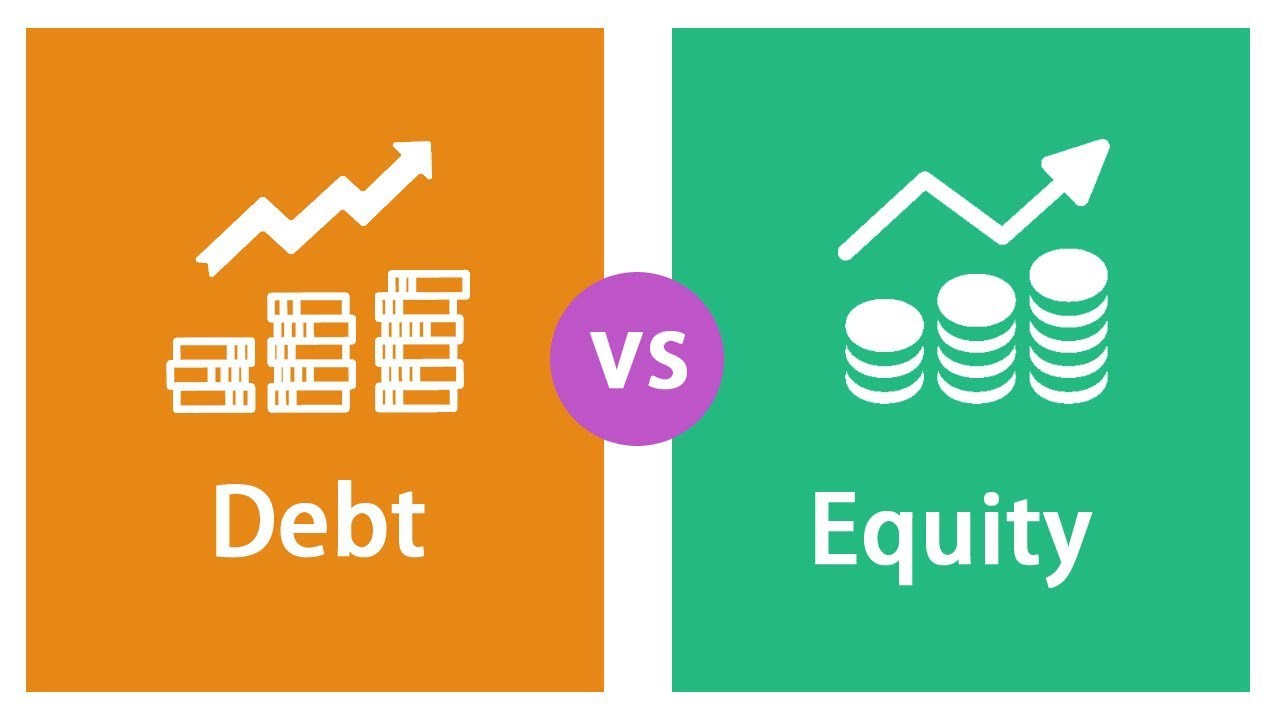Home>Finance>What Is The Difference Between Liquidity And Solvency?


Finance
What Is The Difference Between Liquidity And Solvency?
Published: February 23, 2024
Learn the key distinctions between liquidity and solvency in finance. Understand how these concepts impact a company's financial health and decision-making.
(Many of the links in this article redirect to a specific reviewed product. Your purchase of these products through affiliate links helps to generate commission for LiveWell, at no extra cost. Learn more)
Table of Contents
Introduction
Understanding the Fundamental Concepts of Liquidity and Solvency
Finance can be a complex and multifaceted field, often characterized by a myriad of terms and concepts that can be daunting for the uninitiated. Two such terms that are frequently mentioned in financial discussions are liquidity and solvency. Understanding the distinction between these two concepts is crucial for anyone seeking to comprehend the financial health and stability of a business or individual.
Liquidity and solvency are fundamental pillars of financial management, playing pivotal roles in assessing the viability and sustainability of an entity’s financial operations. While these terms are closely related, they represent distinct aspects of financial health and are used to analyze different facets of an organization’s or individual’s financial standing.
In this article, we will delve into the definitions of liquidity and solvency, explore their significance in financial analysis, and elucidate the key differences between the two. By the end of this exploration, you will have a comprehensive understanding of these critical financial concepts and their implications for businesses and individuals alike.
Understanding Liquidity
Liquidity is a measure of how easily an asset can be converted into cash without significantly impacting its market price. In essence, it represents the ability to access funds promptly to meet financial obligations. Assets such as cash, marketable securities, and accounts receivable are considered highly liquid, as they can be readily converted into cash. On the other hand, assets like real estate and machinery are less liquid, as their conversion to cash may take time and could potentially result in a loss of value.
Understanding liquidity is vital for businesses and individuals as it directly impacts their financial flexibility and ability to navigate unforeseen circumstances. For businesses, maintaining adequate liquidity ensures that they can meet short-term obligations, such as paying suppliers and covering operational expenses, without disrupting their core operations. Similarly, individuals rely on liquidity to address immediate financial needs, whether it be for emergency expenses or taking advantage of investment opportunities.
One common metric used to assess liquidity is the current ratio, which compares current assets to current liabilities. A ratio greater than 1 indicates that a company’s short-term assets can cover its short-term liabilities, suggesting a healthy level of liquidity. However, excessive liquidity may also signify underutilized resources, prompting a need for balance in liquidity management.
Overall, liquidity serves as a safeguard against financial distress, providing the necessary cushion to weather economic downturns and capitalize on favorable conditions. By maintaining an optimal level of liquidity, businesses and individuals can enhance their financial resilience and seize opportunities for growth and development.
Understanding Solvency
Solvency is a critical measure of an entity’s ability to meet its long-term financial obligations. It signifies the capacity to settle debts and other financial liabilities over an extended period, typically exceeding one year. Unlike liquidity, which focuses on short-term financial health, solvency provides insights into an entity’s long-term sustainability and financial soundness.
Assessing solvency involves analyzing the composition of an entity’s assets and liabilities to determine if its long-term obligations can be met without resorting to disruptive measures, such as asset liquidation or additional borrowing. This evaluation is crucial for investors, creditors, and management, as it directly impacts the entity’s stability and creditworthiness.
Key indicators of solvency include the debt-to-equity ratio, which compares a company’s total debt to its shareholders’ equity. A lower ratio suggests a healthier balance between debt and equity, indicating a stronger solvency position. Additionally, the interest coverage ratio, which measures an entity’s ability to cover interest expenses with its earnings, is a vital metric for assessing solvency. A higher interest coverage ratio indicates a greater capacity to fulfill interest obligations, signifying a more solvent financial position.
For individuals, solvency is equally pertinent, reflecting their ability to manage long-term financial commitments, such as mortgages, student loans, and retirement savings. Maintaining solvency ensures financial stability and the ability to achieve long-term financial goals, shielding individuals from the adverse effects of insolvency.
Ultimately, solvency serves as a barometer of an entity’s financial robustness and its capability to endure economic challenges and capitalize on growth opportunities. By upholding solvency, businesses and individuals establish a solid foundation for sustained financial well-being and resilience in the face of evolving economic landscapes.
Key Differences Between Liquidity and Solvency
While liquidity and solvency are both vital components of financial analysis, they differ in their focus and implications for an entity’s financial health. Understanding the distinctions between these concepts is essential for making informed financial decisions and evaluating the stability of businesses and individuals.
Liquidity primarily addresses an entity’s short-term financial viability, emphasizing its ability to meet immediate obligations and manage day-to-day operations. It revolves around the availability of cash and liquid assets to navigate short-term financial demands without disruption. In contrast, solvency delves into the long-term financial sustainability of an entity, focusing on its capacity to honor extended financial commitments and endure economic fluctuations over an extended period.
Another differentiating factor lies in the nature of assets and liabilities considered in each concept. Liquidity centers on current assets and current liabilities, reflecting the entity’s short-term financial position. It emphasizes the immediacy of asset conversion to address short-term obligations. On the other hand, solvency encompasses long-term assets and liabilities, providing insights into an entity’s ability to manage prolonged financial responsibilities and maintain stability over an extended horizon.
The metrics used to evaluate liquidity and solvency also diverge. For liquidity, the current ratio and quick ratio are commonly employed to gauge an entity’s short-term liquidity position, focusing on the adequacy of current assets to cover short-term liabilities. In contrast, solvency metrics such as the debt-to-equity ratio and interest coverage ratio assess an entity’s long-term financial strength, scrutinizing its capacity to manage long-term debt and interest obligations.
Furthermore, the implications of liquidity and solvency extend to different stakeholders. While liquidity concerns are pertinent to suppliers, creditors, and operational management, solvency holds greater significance for long-term investors, lenders, and strategic decision-makers. Understanding these distinctions enables stakeholders to tailor their assessments and strategies based on the specific financial aspect under consideration.
In essence, while both liquidity and solvency are pivotal for evaluating an entity’s financial well-being, their distinct focuses, asset considerations, evaluation metrics, and stakeholder implications set them apart as crucial yet separate facets of financial analysis.
Importance of Liquidity and Solvency
Liquidity and solvency play integral roles in shaping the financial landscape for businesses and individuals, offering distinct yet interconnected benefits that contribute to overall financial stability and resilience.
First and foremost, liquidity holds paramount importance in ensuring the seamless operation of businesses and the financial well-being of individuals. Adequate liquidity empowers businesses to meet short-term obligations, such as paying suppliers, covering operational expenses, and addressing unforeseen financial needs without disrupting their core activities. It serves as a safety net, providing the flexibility to navigate economic uncertainties and capitalize on favorable opportunities. For individuals, liquidity offers the means to address emergency expenses, seize investment prospects, and maintain financial agility, fostering a sense of security and preparedness.
Conversely, solvency is indispensable for establishing long-term financial stability and sustainability. It reflects an entity’s ability to manage extended financial commitments, such as long-term debt, mortgages, and retirement savings, ensuring a solid foundation for future financial endeavors. For businesses, maintaining solvency is crucial for instilling confidence in investors, creditors, and strategic partners, bolstering the entity’s creditworthiness and long-term prospects. Similarly, individuals benefit from solvency by safeguarding their financial well-being, fostering a sense of security and confidence in pursuing enduring financial goals.
Furthermore, the interplay between liquidity and solvency is pivotal for strategic financial management. Balancing liquidity and solvency enables businesses to mitigate financial risks, capitalize on growth opportunities, and navigate economic fluctuations with resilience. By optimizing liquidity and solvency, businesses can strike a harmonious equilibrium between short-term agility and long-term stability, fostering a robust financial framework that adapts to evolving market dynamics. Likewise, individuals can leverage the synergy between liquidity and solvency to manage financial obligations, pursue investments, and plan for future financial milestones with confidence and prudence.
In summary, the significance of liquidity and solvency transcends mere financial metrics, encompassing the fundamental pillars of financial health, adaptability, and longevity. By recognizing and harnessing the importance of liquidity and solvency, businesses and individuals can fortify their financial foundations, navigate uncertainties, and pursue sustainable growth, positioning themselves for enduring success and prosperity.
Conclusion
In the realm of finance, the concepts of liquidity and solvency stand as cornerstones of financial health, offering distinct perspectives on an entity’s short-term agility and long-term stability. Understanding the nuances and significance of liquidity and solvency is paramount for businesses and individuals alike, as they form the bedrock of prudent financial management and decision-making.
Liquidity, with its emphasis on short-term financial flexibility and immediate cash availability, serves as a vital lifeline for businesses and individuals, enabling them to navigate day-to-day financial demands, seize opportunities, and weather unforeseen challenges. Balancing liquidity ensures that entities can uphold operational continuity and respond swiftly to evolving market conditions, underpinning resilience and adaptability.
On the other hand, solvency provides a lens through which to assess an entity’s long-term financial robustness and capacity to manage extended financial commitments. By maintaining solvency, businesses and individuals fortify their financial foundations, instilling confidence in stakeholders, and fostering enduring stability amidst evolving economic landscapes.
The interplay between liquidity and solvency is not merely a matter of financial metrics but a strategic imperative for sustainable financial well-being. Businesses and individuals must navigate the delicate equilibrium between short-term agility and long-term stability, leveraging liquidity to seize opportunities while upholding solvency to ensure enduring financial resilience.
By recognizing the importance of liquidity and solvency and integrating them into strategic financial planning, businesses and individuals can forge robust financial frameworks that withstand volatility, capitalize on growth prospects, and pave the way for sustained prosperity.
In conclusion, liquidity and solvency are not just abstract financial concepts; they are guiding principles that underpin financial prudence, resilience, and longevity. Embracing the symbiotic relationship between liquidity and solvency empowers entities to navigate the complexities of the financial landscape with confidence, adaptability, and foresight, positioning them for enduring success and prosperity.














